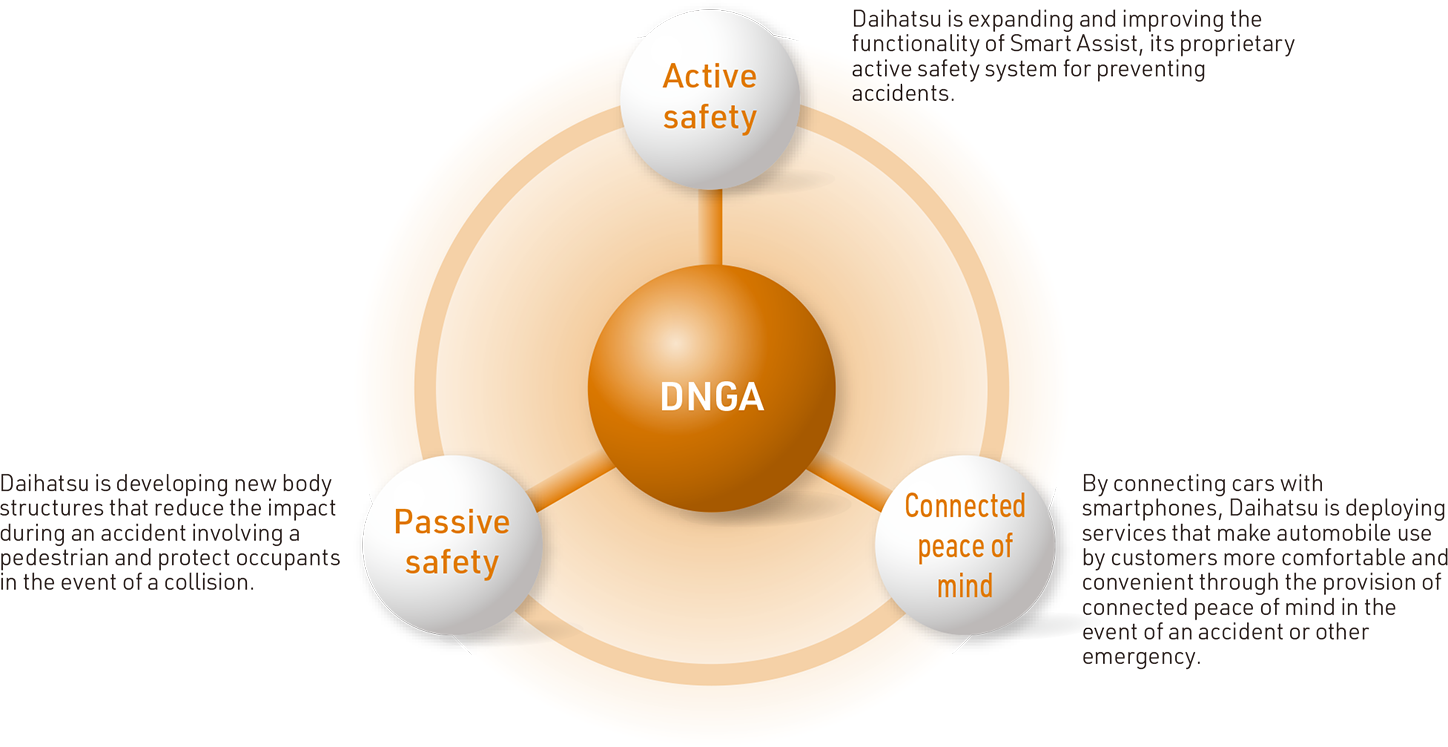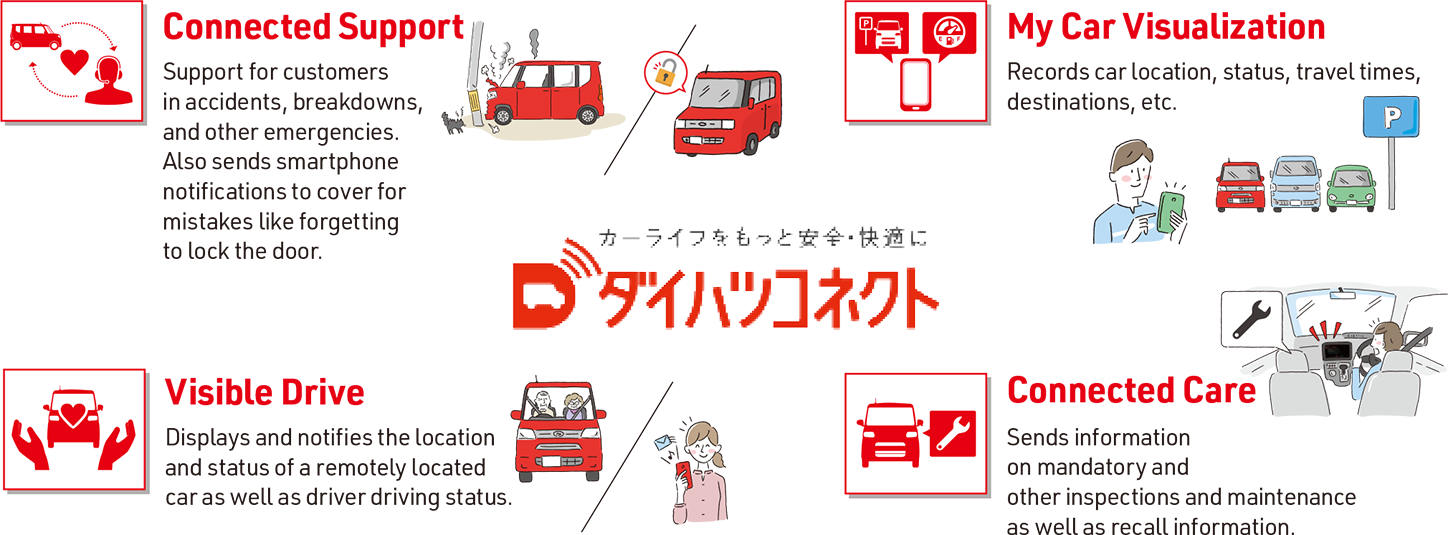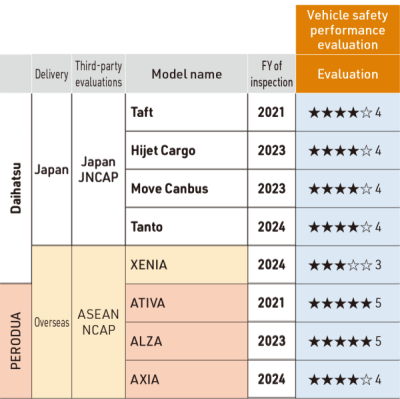Product Safety Initiatives
Safety Technology
Fundamental Approach
Since Daihatsu’s foundation, we have delved deep into the customer-oriented MONODUKURI of high-quality but affordable products so that we can provide small cars that enrich the lives of people around the world. This attitude runs through our development of safety technology. Safety technology is essential for customers to use Daihatsu vehicles with peace of mind and is the most important foundation of our business. Many of the customers who use Daihatsu’s mini-vehicles are women and seniors, and for this reason, the creation of cars that can be driven safely and with peace of mind is even more necessary. The entire Daihatsu Group will continue its unique way of working together to provide the advanced technologies that support the safe and secure mobility of all customers at affordable prices.
Providing Advanced Technologies to Everyone
Daihatsu sees “providing advanced technologies to everyone” as a core concept of car creating. We take active measures to introduce advanced safety technologies and are positioned at the leading edge of the small car market, exemplified by the adoption in 2012 of collision-avoidance support braking as a grade standard, a first for mini-vehicles. Today, as the automobile industry evolves toward CASE* technologies, we are pursuing even more-advanced safety technologies from three approaches—active safety, passive safety, and connected peace of mind—in line with the concepts of the new DNGA car creating platform.
* CASE: An abbreviation for Connected, Autonomous, Shared/Service, Electric
Active Safety
Eliminating all injuries and fatalities caused by traffic accidents is an ultimate objective for society. Daihatsu is evolving “Smart Assist,” its proprietary active safety system, even further to prevent accidents from occurring. “Smart Assist” features various functions including support to avoid collisions with vehicles in front and pedestrians, lane departure control, driver awareness support, and driver burden reduction. We are pursuing active safety from all directions.
Smart Assist

“Smart Assist” is a general designation for Daihatsu’s active safety system. Stereo cameras installed on a vehicle can detect conditions around the vehicle to provide vehicle control or driver decision-making support with the aim of mitigating damage from accidents and driving burdens. Smart Assist is equipped on many models that are currently being sold.
Collision Avoidance Support Functions
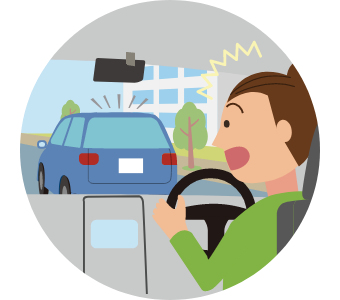
Collision warning function and collision-avoidance support braking that notify the driver of the risk of a collision using a buzzer and a display within the instrument panel and automatically apply the brakes if the danger is imminent / Brake control preventing false starts stemming from accidental pedal pressing, which suppresses engine output and warns the driver with a buzzer and a display within the instrument panel, in addition to activating the brakes if there is risk of collision / Lane departure warning and lane departure prevention functions, which issue a warning if the vehicle is about to stray from its lane and assist steering operation to bring the vehicle back into its lane.
Driving Burden Reduction Function
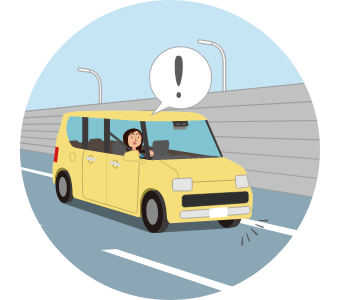
Functions such as “full-speed range adaptive cruise control (ACC),” which controls the vehicle speed to maintain a constant distance to a vehicle in front, and “lane keeping control (LKC),” which assists steering operation to keep the vehicle in the center of the lane, are intended to reduce the burdens of driving on the driver and to create an environment in which safe and comfortable driving is possible.
Awareness Support Functions
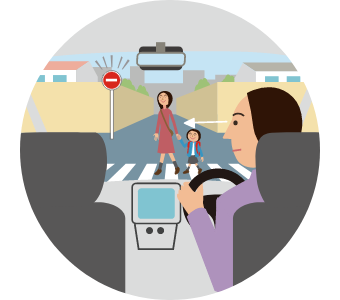
Functions that support safe driving include the preceding vehicle departure reporting function, which uses a buzzer and a display within the instrument panel to inform the driver if the vehicle ahead starts moving when waiting at a traffic light or the like; the sign recognition function that detects signs such as “no entry” signs and warns the driver with a display within the instrument panel; automatic high beams, which detect the lights of approaching vehicles as well as other objects and automatically switch from high beams to low beams; side view lamps, which use auxiliary lights to illuminate the area in the direction toward which the steering wheel is turned to assist turning at night; and adaptive driving beams, which help ensure visibility during nighttime driving.
Parking Support Functions

The top-down-like view uses cameras installed on the vehicle front, rear, left, and right sides to support confirmation of conditions in areas which are difficult to see from the driver’s seat, and in addition to voice and on-screen guides, Smart Panorama Parking Assist detects the white lines when parking and helps control the steering, while the Corner Sensor assists parallel parking and maneuverability in parking lots and garages by changing the alarm sound based on distance with obstacles. Daihatsu is enhancing these and other functions that support operation during parking, when accidents are likely to occur.
Passive Safety
In anticipation of an accident occurring, Daihatsu equips vehicles with safety technology such as “Total Advanced Function (TAF),” a body structure that absorbs collision energy, and SRS airbags that protect occupants with the aim of minimizing damage.
Protecting the Occupant Space from the Force of Collision
TAF bodies, which were developed by Daihatsu, achieve a strong and light cabin with improved collision force absorption. Key features include front side-members with high-efficiency energy-absorbing structures and a body structure that disperses impact forces. Not only do TAF bodies satisfy collision safety standards in Japan and Europe, but they also ensure an adequate survival space even in collision tests that incorporate rigorous testing methods.
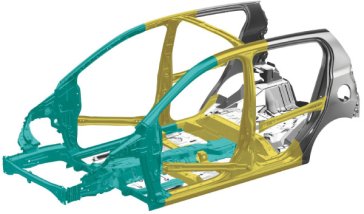 Mira e:S: TAF collision safety body
Mira e:S: TAF collision safety body
Absorbing Impact on Occupants
All Daihatsu models feature dual SRS airbags that instantly deploy and deflate in the event of a strong frontal collision to minimize serious injury to the heads and torsos of occupants. Vehicles are also equipped with SRS side airbags (driver’s and passenger seats) to reduce the impact of side collisions and with SRS curtain shield airbags (front and rear seats) to protect the heads of occupants.
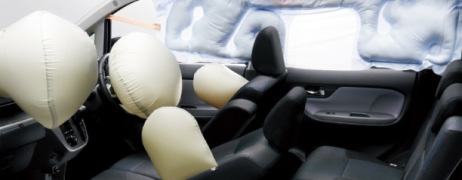
Minimizing Impact on Pedestrians
All Daihatsu vehicles feature impact alleviation devices and absorption spaces in the bumper structure, hood, fenders, windshield wiper pivots, and other areas to mitigate harm in the event of an accident involving a pedestrian.
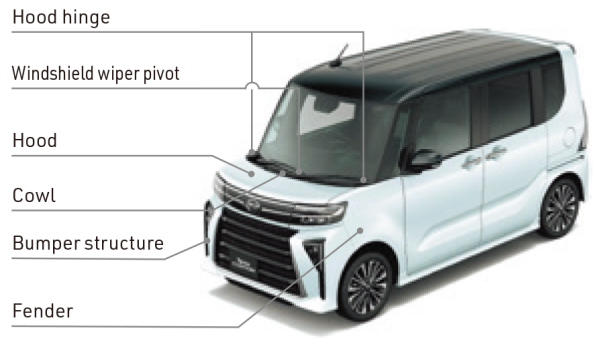
Daihatsu and Aioi Nissay Dowa Insurance collaborate to apply a discount to vehicle insurance for the Move Canbus
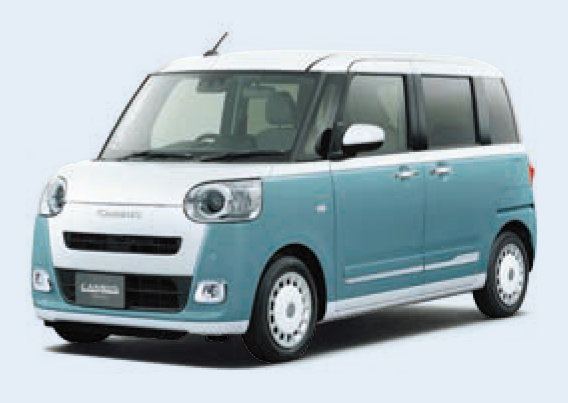 The Move Canbus was certified as eligible for a 5% discount on vehicle insurance premiums by Aioi Nissay Dowa Insurance
The Move Canbus was certified as eligible for a 5% discount on vehicle insurance premiums by Aioi Nissay Dowa Insurance
Daihatsu is working to reduce customer vehicle maintenance expenses by enhancing collision safety performance. One result of these efforts is a reduction in vehicle insurance premiums through joint measures with Aioi Nissay Dowa Insurance Co., Ltd. To reduce repair costs, we incorporated into the Tanto and Taft, the first and second vehicles developed based on DNGA, improvements including placement of high-priced parts in areas where they will not be damaged, provision of simple and inexpensive repair methods, and supply of parts, to greatly enhance damageability and repairability (D&R) performance. For the Move Canbus, which was completely redesigned in 2022, we have taken these initiatives to the next level and applied our improved expertise in D&R performance beginning with the product planning stage.
As a result, the Move Canbus was certified as eligible for the damage resistance and repairability discount offered by Aioi Nissay Dowa Insurance, and a 5% discount on vehicle insurance premium applies. Improvements to D&R performance also conserve resources by reducing replacement of parts and curtailing emissions of substances of environmental load during repair processes.
Providing Connected Peace of Mind and Comfort and Convenience to Customers through Connectivity
To respond to the evolution of automobiles exemplified by CASE, Daihatsu focuses on developing connected services using digital technology. We seek to create a safe, secure, comfortable, and convenient automobile society by connecting customers with their cars and with Daihatsu via smartphones.
Daihatsu Connect
“Daihatsu Connect” is a service that connects customers with their cars and with Daihatsu via connections between compatible in-vehicle devices and smartphones. The Daihatsu Connect system has been simplified to enable customers to make use of it for long periods, and as such we managed to eliminate the basic monthly fee, making it zero yen per month. By using “Daihatsu Connect,” if an accident or breakdown is detected, “Connected Support” sends the location, vehicle and other information to the Accident and Breakdown Center. The “Visible Drive” service, by which Daihatsu Connect confirms the status of the vehicle and driver, notifies a person monitoring the vehicle of the status. The “My Car Visualization” service enables the driver to check where the vehicle was parked and vehicle information at any time using a smartphone. The “Connected Care” service notifies the customer regarding mandatory and other inspections and recall information by displaying information on the compatible in-vehicle devices and sending emails. These and other services enhance customer safety and convenience.
Third-party Safety Evaluations
Our primary vehicle models produced and sold both in Japan and internationally have been highly rated for vehicle safety functionality by third-party evaluations in their respective regions.
